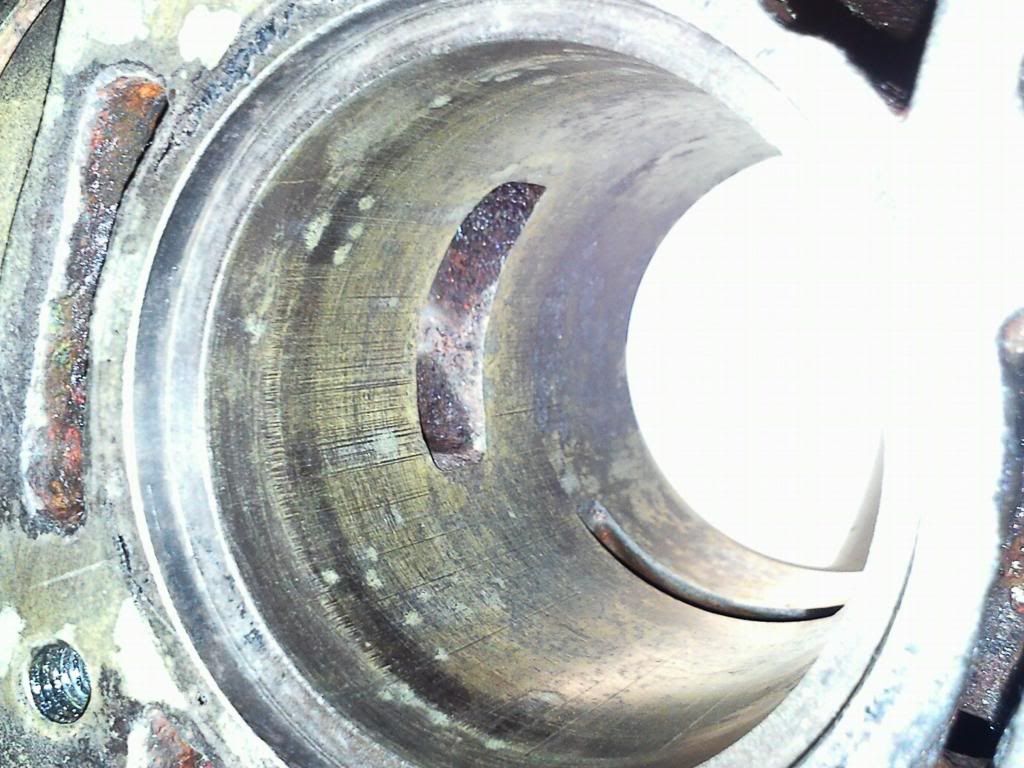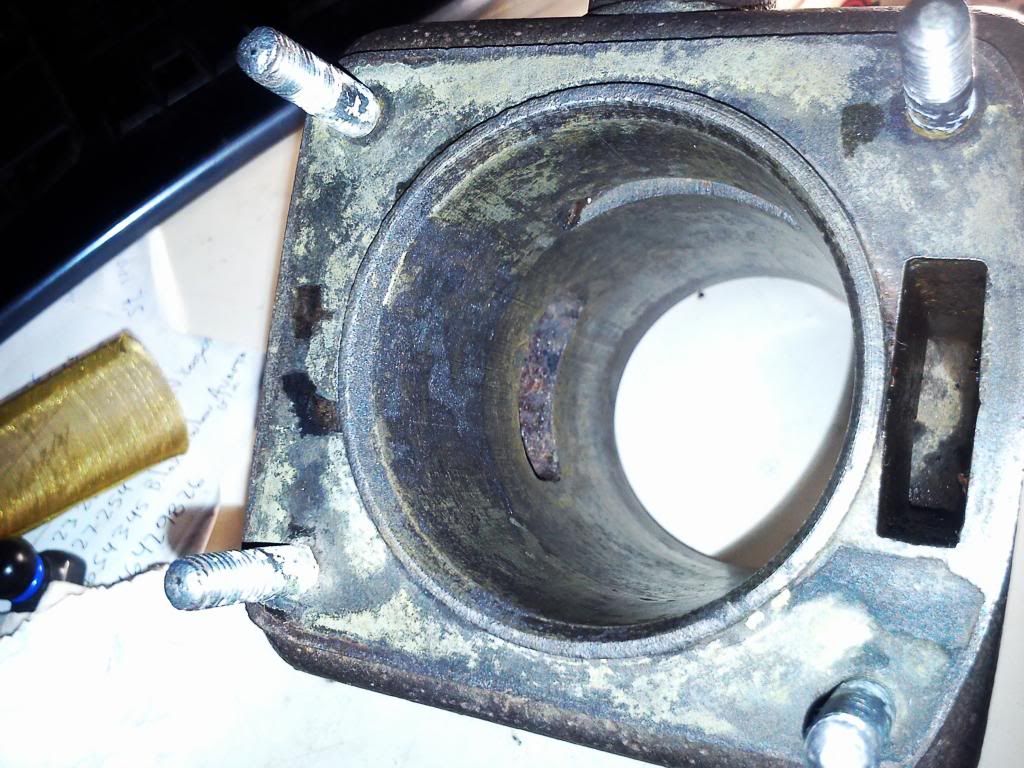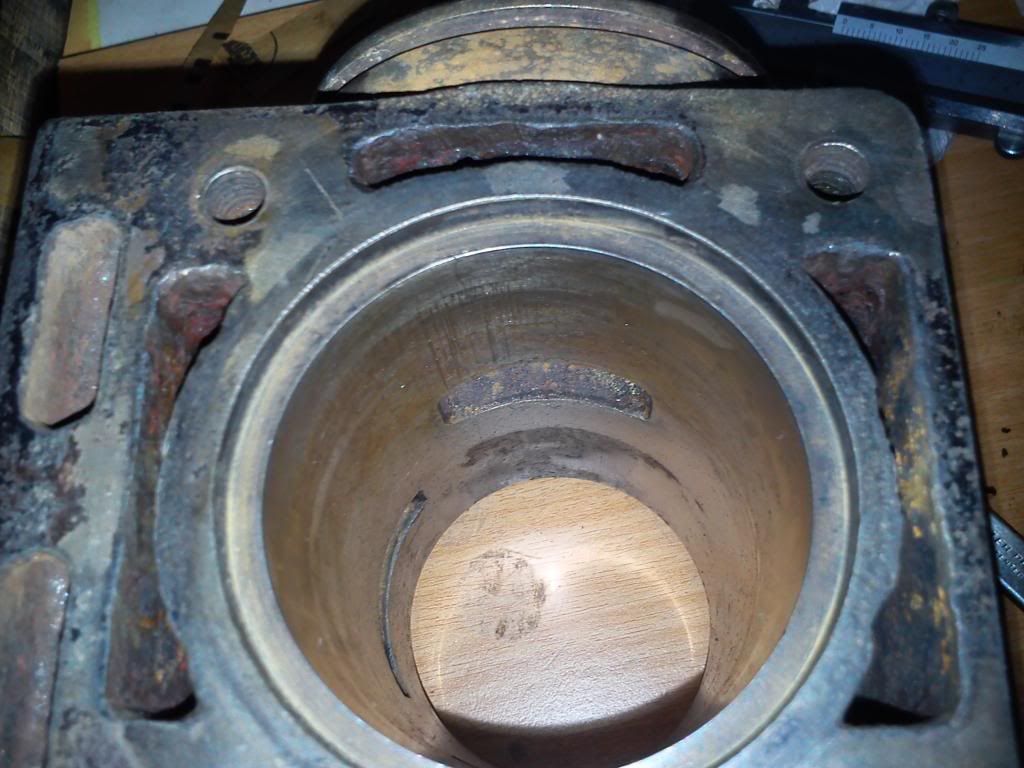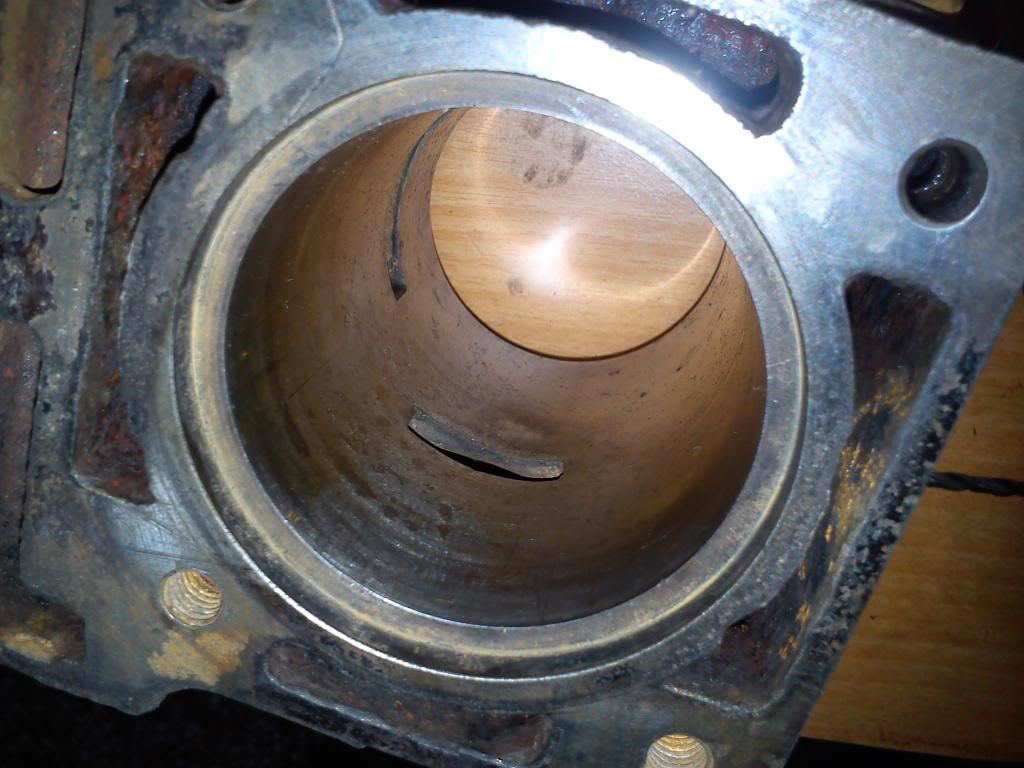Been in the oven mateStelios_Rjk wrote:I will freak out with the Seagulls! Even the crankshaft was dark brown, as if it had become glowing red from the heat at some point in its life.
About cylinder honing
Moderators: John@sos, charlesp, Charles uk, RickUK, Petergalileo
- Niander101
- Posts: 1060
- Joined: Sun Nov 20, 2011 11:30 am
- Location: Yorkshire
Re: About cylinder honing
- Stelios_Rjk
- Posts: 1458
- Joined: Sun Jun 17, 2012 10:15 pm
- Location: Athens - Greece
Re: About cylinder honing
Creative!!! But it needed the hell to see results!
I love the 10600/145 turns!!!
- Stelios_Rjk
- Posts: 1458
- Joined: Sun Jun 17, 2012 10:15 pm
- Location: Athens - Greece
Re: About cylinder honing
The scratches..

And some pitying. That doesn't really matter as it is below piston rings.

Dead or some more honing, 1:10 oil and that's it?

And some pitying. That doesn't really matter as it is below piston rings.

Dead or some more honing, 1:10 oil and that's it?
I love the 10600/145 turns!!!
- 1650bullet
- Posts: 669
- Joined: Wed Jun 13, 2012 9:52 pm
- Location: Australia
Re: About cylinder honing
Give it some more honing. If you were to use your honing tool on such a rusted and pitted bore you would of wrecked the stones on it. Use some course emery paper using the method i showed you with the sponge.
- Stelios_Rjk
- Posts: 1458
- Joined: Sun Jun 17, 2012 10:15 pm
- Location: Athens - Greece
Re: About cylinder honing
Imagine that I honed a little bit this bore. OK, I will try your method.
I love the 10600/145 turns!!!
- 1650bullet
- Posts: 669
- Joined: Wed Jun 13, 2012 9:52 pm
- Location: Australia
Re: About cylinder honing
Thats looks pretty rough in that bore. Try 120 grit then 240 grit. See how it looks after you do those 2 and post up a pic.
-
david doyle
- Posts: 355
- Joined: Tue Jan 15, 2013 4:03 am
- Location: British Columbia
Re: About cylinder honing
Stelios, you need a patio lathe and you need to find out what piston you can bore gulls out for  Must be a common piston out there that you can adapt all the ultra trashed blocks to.
Must be a common piston out there that you can adapt all the ultra trashed blocks to.  Imagine NEVER having to admit a gull is garbage. Price of cranks,gear boxes and flywheels will go thru the roof. Or maybe you could be "that guy" that sleeves gull blocks.
Imagine NEVER having to admit a gull is garbage. Price of cranks,gear boxes and flywheels will go thru the roof. Or maybe you could be "that guy" that sleeves gull blocks.
- Stelios_Rjk
- Posts: 1458
- Joined: Sun Jun 17, 2012 10:15 pm
- Location: Athens - Greece
Re: About cylinder honing
Yes it rough but the picture may show it even rougher than it really is. 120 or 240? I would use 400 grit or higher. Do you think that this would be a good idea?
No David.. I don't think that I would be "that guy"
No David.. I don't think that I would be "that guy"
I love the 10600/145 turns!!!
-
Horsley-Anarak
- Posts: 2838
- Joined: Thu Aug 07, 2008 8:42 pm
- Location: Surrey
Re: About cylinder honing
I hone with 120 grit ball hone, this was recommended by the hone manufacturer.Stelios_Rjk wrote:Yes it rough but the picture may show it even rougher than it really is. 120 or 240? I would use 400 grit or higher. Do you think that this would be a good idea?
No David.. I don't think that I would be "that guy"
400 is way too fine, but do not overdo it with the coarser grit.
H-A
- Collector Inspector
- Posts: 4196
- Joined: Sun Jun 29, 2008 4:32 am
- Location: Perth Western Australia
- Contact:
Re: About cylinder honing
Fix Hellas? Now why can I not get this locally?
Flexhone if ya can get one is the best. They last for a lifetime.
If the piston came out, a light hone and check your rings. Pretty simple, just measure the basics. If the piston looks ragged best to get a new one aye. Sometimes most, the rings once freed just fit again?
One thing to note is that the bore is straight, top to bottom. No need to get carried away with that if measures "IFFY" ok?
Kinda a Gull Thingy
Nothing special as we are dealing agricultural here
B
Flexhone if ya can get one is the best. They last for a lifetime.
If the piston came out, a light hone and check your rings. Pretty simple, just measure the basics. If the piston looks ragged best to get a new one aye. Sometimes most, the rings once freed just fit again?
One thing to note is that the bore is straight, top to bottom. No need to get carried away with that if measures "IFFY" ok?
Kinda a Gull Thingy
Nothing special as we are dealing agricultural here
B
A chicken is one egg's way of becoming others
- Stelios_Rjk
- Posts: 1458
- Joined: Sun Jun 17, 2012 10:15 pm
- Location: Athens - Greece
Re: About cylinder honing
Fix Hellas is not so famous, I think it sells locally.
I get the other tool with the three stones. How am I supposed to measure the rings gap when standing inclined to the direction that the piston moves? I mean the gap.
About straightness of the bore? By trying using it on a power head will I check?
I get the other tool with the three stones. How am I supposed to measure the rings gap when standing inclined to the direction that the piston moves? I mean the gap.
About straightness of the bore? By trying using it on a power head will I check?
I love the 10600/145 turns!!!
- Stelios_Rjk
- Posts: 1458
- Joined: Sun Jun 17, 2012 10:15 pm
- Location: Athens - Greece
Re: About cylinder honing
The worst point, over the exhaust outlet.

And another view of the bore.

I fabricate something like 1650bullet said. Put the cylinder underwater and rasp with 280 grit. Couldn't bare to use something coarser. So after some rasping, checking etc decided that it was enough. The deepest scratches (2 or 3) wasn't too deep anymore. Continued with the honing tool and then it was time for a test. Removed the cylinder of a power head with a lot of compression and put this one on. It fired after 2-3 pulls! I didn't let it run for more than thirty seconds. I am a very polite person. More than 30 seconds and all neighbors will be deaf. No water circulation or exhaust


Then spin a little bit the flywheel and surprisingly feel compression equal or even better than the previous cylinder had. I wasn't expecting honing to be so rejuvenating!
I tried to place in the bore new rings, from army I think. But couldn't get in. The other rings I have, have inclined gap and still can't figure out how to measure it. My compression gauge is somewhere in Sunderland and will come in a couple of weeks. Until then conclusions by... feeling! And 10% oil rocks!!!

And another view of the bore.

I fabricate something like 1650bullet said. Put the cylinder underwater and rasp with 280 grit. Couldn't bare to use something coarser. So after some rasping, checking etc decided that it was enough. The deepest scratches (2 or 3) wasn't too deep anymore. Continued with the honing tool and then it was time for a test. Removed the cylinder of a power head with a lot of compression and put this one on. It fired after 2-3 pulls! I didn't let it run for more than thirty seconds. I am a very polite person. More than 30 seconds and all neighbors will be deaf. No water circulation or exhaust
Then spin a little bit the flywheel and surprisingly feel compression equal or even better than the previous cylinder had. I wasn't expecting honing to be so rejuvenating!
I tried to place in the bore new rings, from army I think. But couldn't get in. The other rings I have, have inclined gap and still can't figure out how to measure it. My compression gauge is somewhere in Sunderland and will come in a couple of weeks. Until then conclusions by... feeling! And 10% oil rocks!!!
I love the 10600/145 turns!!!
- Niander101
- Posts: 1060
- Joined: Sun Nov 20, 2011 11:30 am
- Location: Yorkshire
Re: About cylinder honing
Unfortunatly and surprisingly I don't think they ever made any bigger pistons for rebores?
Unless Hepolite made some?
Unless Hepolite made some?
- 1650bullet
- Posts: 669
- Joined: Wed Jun 13, 2012 9:52 pm
- Location: Australia
Re: About cylinder honing
You were better to do as i mentioned instead of using a hone. You would of wrecked the stones on your hone trying to clean the cyl, and there an expensive tool.What you have done has worked out good for you. Good work. Here is a couple of pics of how your rings may look when sitting in the bore. Do you ring gaps that look like this.If so, this is how you should measure them.
- Stelios_Rjk
- Posts: 1458
- Joined: Sun Jun 17, 2012 10:15 pm
- Location: Athens - Greece
Re: About cylinder honing
Thanks Kean. I didn't care a lot about the cyl hone. It costs 7euro and it's inappropriate. The stones are 3cm long and they hit on the ports while honing. I have to buy a serious tool. At least the result was rewarding.
I love the 10600/145 turns!!!